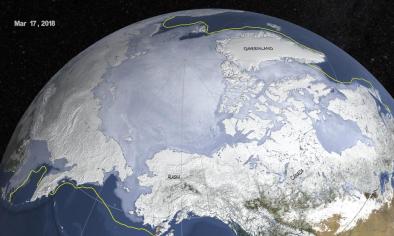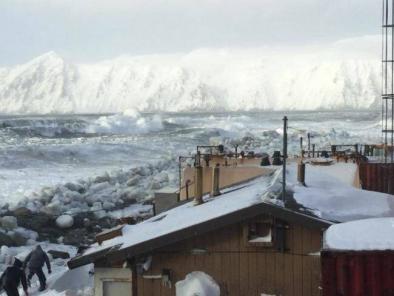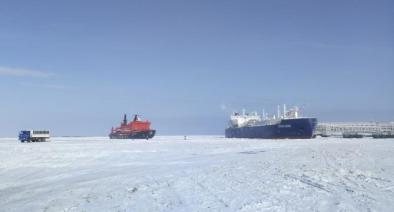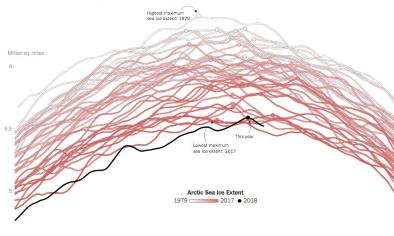Sea ice at both poles is at lowest levels on record, again
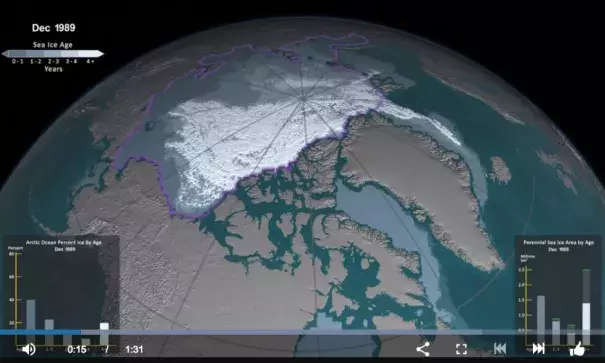
There's bad news coming in from the ends of the Earth, as sea ice in both the Arctic and the Antarctic is, once again, setting new records for lowest extent on record.
After global sea ice set a new record low for 2017, conditions in the Arctic and Antarctic started off 2018 less than ideal, and they have no been improving since.
Arctic sea ice extent on January 1, 2018 was 12.34 million square kilometres, over 1.3 million sq km smaller than the long term average, and 230,000 sq km smaller than it was just one year before, when it was setting a previous record low. As of February 20, the ice extent has grown since, reaching 13.95 million sq km in the darkness of the Arctic winter, but only very slowly and even suffering a setback in early February, despite the darkness.
According to the US National Snow and Ice Data Center (NSIDC), for the month of January air temperatures above the Arctic Ocean were at least 3°C above normal, for the entire region.
From the NSIDC January report on the Arctic: "The warmth over the Arctic Ocean appears to result partly from a pattern of atmospheric circulation bringing in southerly air, and partly from the release of heat into the atmosphere from open water areas."
As of now, while the ice extent continues to tick upward in the Arctic, it is roughly 350,000 sq km behind what was there at this time last year, and we are seeing a rate of growth now that is significantly slower. Unless something fairly significant happens in the next few weeks, to freeze more than half a million square kilometres of ice in the Arctic Ocean, 2018 will become the fourth year in a row that sets a new record low for maximum winter sea ice extent in the Arctic. This is certainly possible.
In the Antarctic, where sea ice around the continent is approaching its summer minimum for the year, the ice extent is also setting a new record low, at this time. As of February 20, ice extent was at 2.181 million sq km, just 48,000 sq km behind the 2017 extent on that day.
Throughout the month of January, sea ice extent in the Southern Ocean was tracking at slightly above 2017 levels, and thus second lowest on record. Just in the past week or so, however, the daily extents have dropped below where they were for the same dates in 2017, thus setting new record lows.
As of their January 2018 report, NSIDC scientists were puzzling over the low sea ice extents in the Southern Ocean for that month, as air temperatures in the region were roughly average or slightly below the 1981-2010 average. Subsurface ocean temperatures or currents may hold the key, but are more difficult to measure and track.
Related Content
